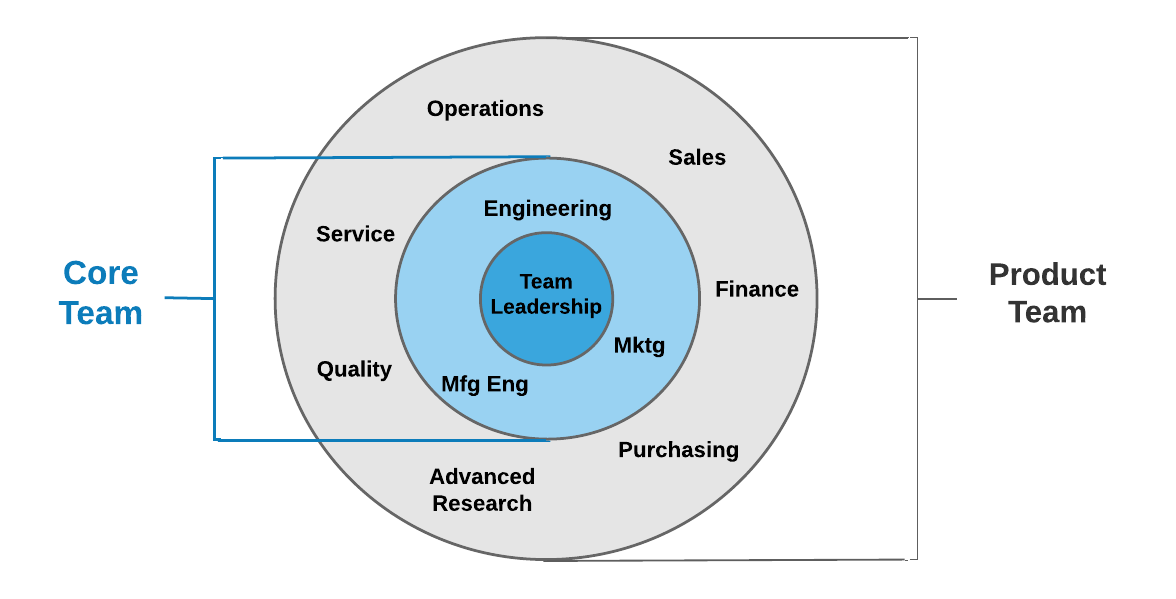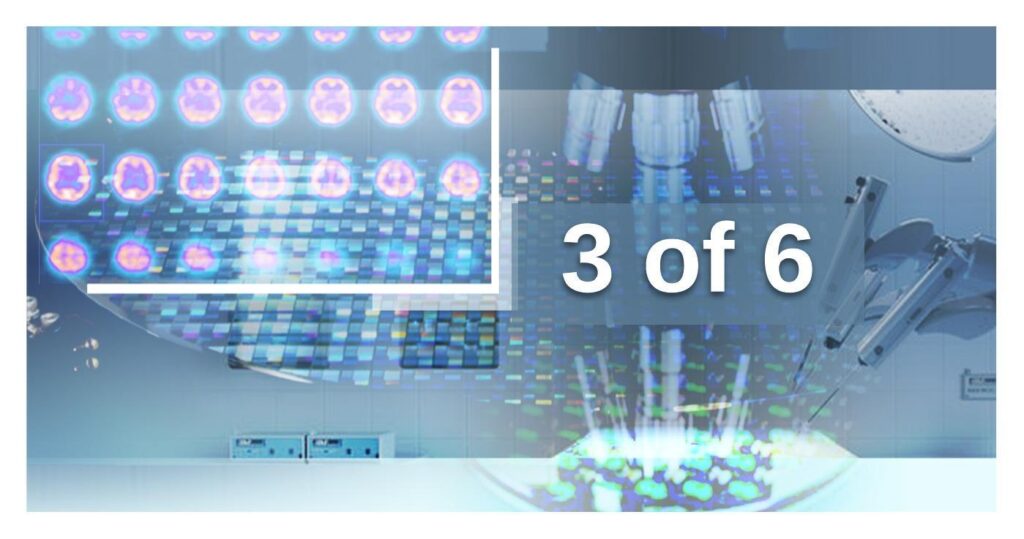Guest blog by Russ Singleton
I’ve been fortunate, living in Silicon Valley, to be able to meet and talk with Russ Singleton, a very experienced R&D executive from whom I’ve learned a lot about how to structure an organization for successful product development. For those of you who can’t meet with Russ in person, I’ve asked him to author this series of blog posts describing his experience in developing highly complex, innovative new products—from semiconductor manufacturing equipment to molecular diagnostic systems to surgical robotics. I hope you’ll enjoy these conversations with Russ as much as I have.
-Aaron Joseph
When product development goes wrong, there’s a tendency to blame individuals. Surely, if we had the “right” team members, development would have gone perfectly, right?
But even the “right” individuals do not lead to successful development when used to form the “wrong” team. Ultimately it is the product development team as a whole that will determine success.
I previously covered the importance of having a Phase Zero – a period of understanding the customer, defining the product strategy and exploring design alternatives and prototyping to remove the risk, i.e. invention, out of development. These three pieces are the template for the product development. Phase Zero ensures development starts off on the right track, but it is the product development team that keeps it moving forward.
There is no one “right” team that will propel any organization to project completion, but there are certain criteria that your product development team should meet. Broadly speaking, your team should have core-team leadership, cross-functional development and a determined amount of autonomy based on product needs.
I have been using the product development structure described in the next few paragraphs for many years in companies spanning multiple industries. It was a key part of a new product development process we created in a life-sciences instrument startup.
Core Team Leadership
Successful development of highly complex innovative products is the result of integrating many contributions from different functions within a company. We called the group of all the individuals associated with the project that materially contribute to its development the Product Team. These would include the entire R&D project team, staff from marketing, manufacturing engineering, purchasing, regulatory, quality and service.
The areas and disciplines your team will need to cover may be different. It’s important to consider cross-functionality at both the technical level and the business level. This diagram below is a sample product development team, where the Product Team is sometimes called an Extended Team.
The leaders of the Product Team became known as the Core Team. This group consisted of 3 to 4 leaders from R&D, Marketing, Clinical and Operations. And their main qualifications are the ability to lead and keep the team accountable.
One individual is designated the Core Team Leader, typically from R&D or Marketing. In some organizations this leader may be a program/project leader independent of the functions and report to a program office.

The approach is to emulate the leadership of a new business venture. That leadership would be empowered to make decisions quickly and to directly implement those decisions. Think of a company structure. The CEO is not making major company-wide decisions independently, but relying on input and contribution from other members of the senior team.
I have seen this core team and core leadership model work effectively in many different projects and companies. In one notable case, a medical device company, we had upwards of 100 people on the product team. The team was led by a very strong program manager, as well as strong cross-functional leaders with different deliverables for the product development. The cross-functional leaders were from engineering, marketing, operations and supply chain, clinical and field support, and regulatory and quality. The program objective was to improve reliability and quality over previous generations. The results were outstanding, with the product receiving recognition for high quality and creating a large backlog of sales at the time of launch. Over time, the product captured significant market share from competitors.
Cross-Functional Development in R&D
Product development is a team sport. The ability to collaborate and function within a small team setting is as important as an individual’s skill set or technical expertise. Great products are created when the team works effectively together but product development can lose significant time and opportunities for better outcomes when teams don’t.
Highly complex, innovative products are the result of integrating many R&D disciplines. For example, automation/robotic systems with mechanical, electrical, optical, machine vision and software engineering. I have found it more effective when these different discipline members are organized into groups along subsystem lines, rather than under engineering discipline management.
In one company, I structured the R&D team so that there were no discipline managers (e.g. mechanical or electrical engineering managers). Rather, those leaders took on the role of subsystem or market category leaders within engineering. The small teams solving problems together came from different disciplines, and it enabled their problem solving and creativity insights that would not have happened within a single discipline or silo structure. Over several years, the company released over 20 systems and software products and grew revenue 5-fold leading to an IPO.
Summary
The right product development team is much greater than the sum of its individual team members. Forming teams for complex product development involves effective leadership, cross-functional contributions and optimized team structure for the project. My experience is that well designed teams will produce innovative products in a timely manner which over years will create great value for the company.
Further Reading
- Revolutionizing Product Development: Quantum Leaps in Speed, Efficiency, and Quality by Steven C. Wheelwright and Kim B. Clark
- Setting the PACE in Product Development: A Guide to Product and Cycle-Time Excellence by Michael E. McGrath
Next Post: Micro Projects and Other Practices
About the Author
 Russ Singleton is a results-oriented high-growth and transformation executive with experience across MedTech, Healthcare IT, Genetic Sciences and Semiconductor Equipment sectors. He has a passion to maximize results for startups and global, mid-sized businesses. He does this by transforming culture, driving customer-focused strategy, and leading market-oriented technology innovation.
Russ Singleton is a results-oriented high-growth and transformation executive with experience across MedTech, Healthcare IT, Genetic Sciences and Semiconductor Equipment sectors. He has a passion to maximize results for startups and global, mid-sized businesses. He does this by transforming culture, driving customer-focused strategy, and leading market-oriented technology innovation.
As interim VP of R&D at Medrobotics, a surgical robotics startup, he was hired to jumpstart stalled efforts to secure CE Mark for a surgical robotics product. After successful approval, he joined full-time to lead transformation of the R&D organization. Prior to Medrobotics, Russ has extensive experience including CEO, COO, General Management and VP R&D.
Russ holds a Ph.D. and M.S. in electrical engineering from the University of Illinois and a Bachelor of Engineering from the Pratt Institute. He is also a graduate of the Management of High Technology Companies program at Stanford University’s AEA Executive Institute.


Pingback: The Secret to Product Development is to Not Start Development - Sunstone Pilot, Inc.